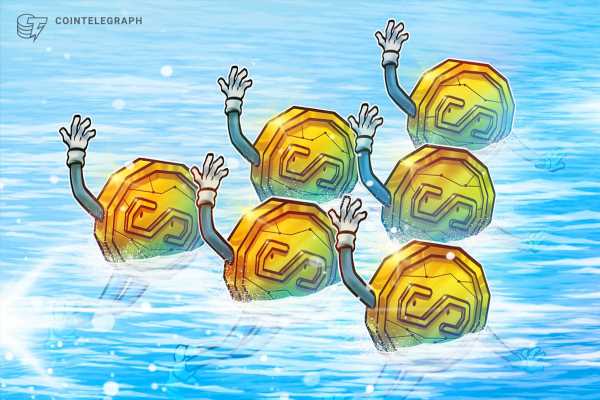At the recent Future Innovation Summit event held in Dubai, Cointelegraph moderated a panel titled “Stablecoins, Central Bank Digital Currencies and Cross-Border Payments” to explore if CBDCs and stablecoins can coexist and how this would be possible.
The panel included Jorge Carrasco, the managing director of FTI Consulting; Nikita Sachdev, the founder of Luna Media Corp; Jagadeshwaran Kothandapani, the head for Middle East and Africa for Citibank; and Eetu Kuneinen, the co-founder of the gold-backed stablecoin project DGC.
The group explored various topics, answering whether stablecoins and central bank digital currencies (CBDCs) can coexist. According to Kuneinen, CBDCs would be “centralized by nature” as they would be issued by the government, even though they may be built on a blockchain. The executive argued that certain dangers come along with government control. He explained:
“Let’s say that they don’t like some political rivals. They can, with one click, freeze the other party’s assets. So, what gives us any security that they won’t use this? Or if they are a smaller country, they are pressured by a bigger country to do so?”
On the other hand, the executive argued that creating a framework for a stablecoin that’s not controlled by one private company may be preferable. “We could have a framework where anyone with assets and anyone with access to certain technology could be able to issue it. So, we could we could have multiple banks issuing the same stablecoin regulation,” he added.
Sachdev offered a different opinion on the topic. The executive said that if the government is already intent on freezing a person’s digital assets, they already have various means to do this. Furthermore, Sachdev argued that the government’s exploration of utilizing the blockchain for CBDCs might be a step into progress that may eventually lead to going fully decentralized and fully Web3.
While the executive seemed to be defending CBDCs, she clarified that she is not in favor of either CBDCs or stablecoins yet, as recent incidents such as the TerraUSD (UST) collapse highlighted how stablecoins may also pose their own set of risks for the world.
Related: Singapore central bank says three business days is ‘timely transfer’ for stablecoins
Carrasco added that since the technology is at a very early stage, it’s unavoidable to see problems on the way to progress. “I think it’s very normal to see failures and to see learnings as we move forward,” he explained. The executive also believes that CBDCs and stablecoins may even become interoperable in the future. He added:
“I think they will coexist. And, probably in some years, we will see a transnational body that will take care of the CBDCs and the interoperability between them and ensure that no government can pull the plug or do something that affects the interests of the people.”
Meanwhile, Kothandapani echoed the sentiments expressed by the other panelists and added that companies or users would always be the ones to decide which solution would be for them.
According to the executive, they would be the ones to determine which specific “pain points” exist and whether CBDCs or stablecoins would be the answer to that. The executive also believes that the two can coexist as long as stablecoins remain stable and decentralized.
Magazine: Yuan stablecoin team arrested, WeChat’s new Bitcoin prices, HK crypto rules: Asia Express
Source: Read Full Article
-
Sam Bankman-Fried's Trial Day 3: Shocking Information Revealed! – Coinpedia Fintech News
-
Dan Gambardello Predicts Historic Bull Run for Cardano, Mirroring Ethereum's Rise
-
Scientists reverse-engineered the Luna flash crash using particle physics
-
Crypto Lawyer Responds to Onlooker Who Predicts That Ripple Will Lose to the US SEC
-
Crypto News Asia: Bitcoin, Ethereum Surge While the Crypto Market Cap Soars a Little – Coinpedia Fintech News



